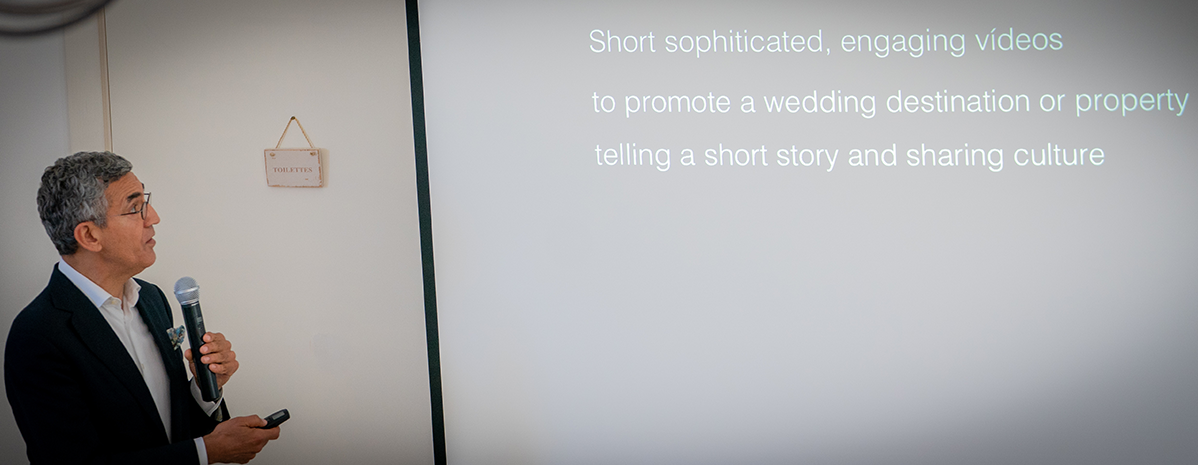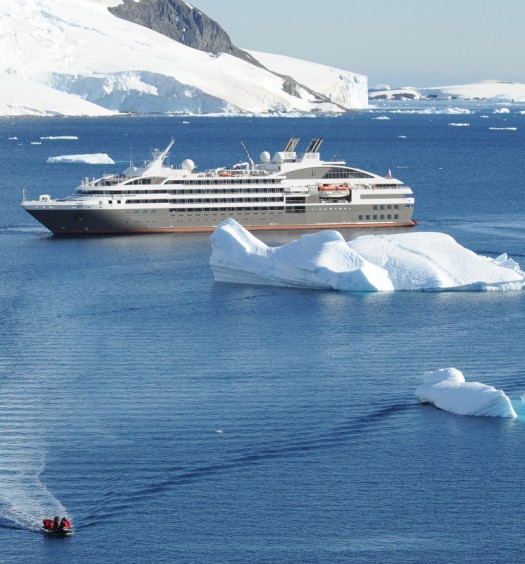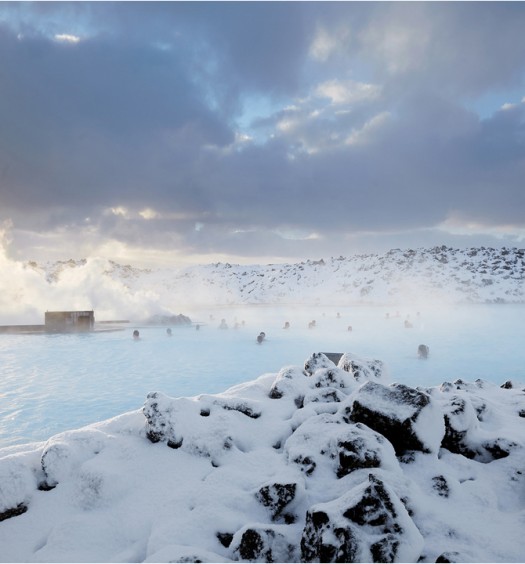We spoke to our Connections Weddings ConnecTALK speaker, António Paraíso to find out a bit more about the fascinating luxury market
Q:There are many different definitions of luxury. What does it mean to you?
I believe one should try to understand luxury both from the perspective of the consumer as well as that of the brand. If I am a brand manager, I believe that luxury is the subtle combination of perfect tangibility and seductive intangibility. And I should work in order to make sure that my brand and respective offering mirrors that blend. If I am a well-educated, wealthy consumer, then luxury to me is a state of mind and a way of life. Brands should understand it and make sure to deliver at the level so that I feel connected to the brand and become a loyal customer.
Q: How has the perception and consumption of luxury shifted in recent years?
I see three changes. When I studied Luxury Brand Management ten years ago, most luxury brands were sceptical about the internet and digital marketing, consumers were much more interested in owning luxury objects rather than living memorable experiences and luxury was still very much about extravagance and wastefulness.
In this past decade, mainly because of Millennials and later Gen Z, all high-end brands are using digital marketing, luxury services and sophisticated experiences in hotels, travel, gastronomy, healthcare, wellness, entertainment have increased sales tremendously and finally, luxury brands are increasingly concerned with the planet and the society, acting to promote and place sustainability as well as social responsibility at the core of their strategies.
Q: What does this mean for luxury brands? What should they be doing to appeal to today’s consumer audience?
According to “Luxury Goods Worldwide Market Study 2018” by Bain & Co., generations Y (Millennials) and Z represented 47% of the global consumers of personal luxury goods, last year. This study predicts that in 2025 these generations will represent 55% of luxury consumers and nearly all luxury purchases will be influenced by online interactions.
Hence, high-end brands will have to invest more in using digital to ‘seduce’ their target audiences, in communicating purpose and values, in offering enticing, unforgettable experiences and take adequate action in protecting the planet and people in need.
Q: Is there such a thing as ‘true luxury’?
Luxury is a sociological phenomenon of consumption, which consists in building brands that represent elegant lifestyles and fully connect with the ego of consumers. Consumers will then buy products and services because they wish to live those lifestyles.
According to Danielle Allerès, a French luxury expert, brands can be organised in a pyramid with three layers: Accessible luxury, Intermediate Luxury and Inaccessible Luxury.
You can buy products and services from brands in the first two layers as long as you have enough money. But, you also need power and influence, and not money only, in order to access “inaccessible luxury brands”. For instance, Ferrari and Hermès do not sell certain iconic products to everybody. Certain Chefs and Event Organisers do not accept to serve customers who are not powerful and influence. Money is not enough. And that’s when customers feel really exclusive, special and unique. Luxury is not for everyone and eventually true luxury lies up there at the tip of the pyramid.
Q: What advice would you give to luxury brands who are navigating the benefits of new technologies, with personal, human-to-human service?
The use of new technologies is growing every day. But luxury is the business of making people feel special and you can only achieve it with personal interactions and exceptional human-to-human service.
According to the study I have mentioned above, the global luxury market has recorded worldwide sales of nearly €1,2 trillion in 2018, where global online luxury sales totalled €27 billion. So, only 2,25% of worldwide luxury sales were made online.
In the luxury industry, digital is used mainly to communicate the dream and lifestyle of the brand, but then human interaction with a lot of attention to detail and clearly exceeding expectations is key to seduce customers, sell and make them loyal.
The main advice I would give to luxury brands in this context is to make sure the 5 Es are developed with creativity in the customer relationship, both online and face-to-face.
- Memorable experiences, which demand all the senses, are decisive in building customer loyalty.
- Emotion is mandatory in customer relationship. When clients are touched by emotion, they are happier, less rational and spend more. Without emotion, there will be no luxury experience.
- The exclusivity of the products or services along with customized interaction add high value to the offer and make the recipient feel unique and special.
- Brands that allow customer engagement in the processes of building customized offering, clearly increase the sense of belonging and loyalty.
- Finally, all of this has to be developed with elegance, charming behaviour, a touch of sophistication and plenty of authenticity.
Q: Which luxury brands do you believe are raising the ceiling & challenging the status quo?
Traditionally, luxury has been about wastefulness, extravagance and ostentation. Nowadays, brands challenging the status quo are those actively committed to reducing their impact on the planet and setting the example for other brands. Inspiring examples in fashion are Stella McCartney, Gabriela Hearst and the Kering Group. L’Oréal Group are doing an incredible job to make the beauty industry more sustainable. And in Southeast Asia, luxury resort groups Song Saa, Soneva, Alila and Bawah Reserve are really raising the ceiling in sustainable action. These brands bring a fresh debate, a new approach and true inspiration to the luxury industry.
Q: What do you believe the future holds for luxury?
People will always wish to feel special and will always be willing to pay a premium price for something that makes them feel unique.
Global luxury sales in 2018 increased 5% from 2017 and I believe this trend will be kept in future. Younger generations will be the primary engine for growth in coming years. By 2025, it is expected that half of all luxury purchases will be digitally-enabled, with the help of virtual reality and mobile payments, and nearly all luxury purchases will be influenced by online interactions.
Q: How can luxury brands keep up with the changes?
In my opinion, luxury brands should not be so obsessed with changing and adapting all the time, just like consumer brands do, otherwise they might banalize, lose their purpose, charm and power of attraction. In the end they risk losing relevance, if they try to adapt to any trend every time. Luxury brands are trend-setters, not followers.
Having said that, the luxury industry must of course take the lead in adopting measures in accordance to the evolution of the world, like the digital transformation and the survival of the planet.
Q: You have worked with such a rich selection of luxury brands across industries. What have been some of the most memorable moments, & why?
I would select the work with LOEWE, Porsche, Armani and Procter & Gamble.
When the LOEWE family sold the brand to LVMH Group, the new Managing Director has selected four industry experts and invited them to the headquarters to listen to their opinion about the future of the luxury market. I felt honoured with that invitation. A true privilege. I loved working for Porsche and Armani because I love their products. Finally, being invited by P&G to be the keynote speaker at their annual convention in Singapore was a fantastic moment in my career. I had to research and learn a lot about the Asian affluent consumer and I got the opportunity to inspire 300 delegates with my ideas. It was marvellous!
Q: What would our readers be surprised to find out about you?
I am not exactly a man full of surprises. Eventually, they will be surprised to learn that my passion is travelling the world, visiting amazing places, experiencing the local culture and buying beautiful coffee table books of each city I visit around the world. I have a huge collection of books from cities in about fifty countries, in the five continents.




